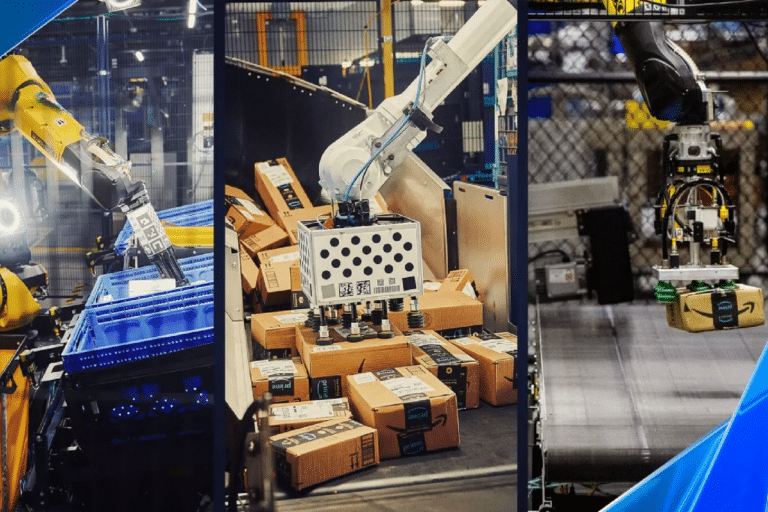Amazon, the e-commerce giant, has been betting on robotics for more than a decade now to improve its operations. What is striking, however, is the increasing level of automation its warehouses are achieving, with the implementation of advanced technology at every stage of the logistics process. This week, the company announced details of its new, state-of-the-art logistics center in Shreveport, Louisiana, a model that will serve as a reference for its future facilities.
This center, with five floors and a floor area of 278,700 square meters, is fully equipped with state-of-the-art technology. The facility stands out for its intensive use of robots and algorithms powered by artificial intelligence, which promise to revolutionize logistics. According to the company, the number of robots deployed in this center is ten times greater than in its previous warehouses.
Robotic innovation: from autonomous vehicles to mechanical arms
At the new Amazon facility, autonomous mobile robots are in charge of moving shelves with products, preparing shipments without direct human intervention. This technology has its roots in the company Kiva, acquired by Amazon in 2012. In addition, Amazon has deployed three models of robotic arms: Robin, Cardinal and Sparrow, which are responsible for sorting and ordering products with high precision.
Sparrow, the most advanced, uses artificial vision to handle a wide range of products and has been trained to handle more than 200 million different items. Added to this is the Sequoia system, a multi-tier inventory solution that collaborates with robots and employees to improve efficiency in the logistics center.
A future workforce marked by robotics
Despite the growing presence of robots, Amazon assures that automation will not reduce the workforce, but rather transform the type of employment needed. The Shreveport facility, when operating at full capacity, will employ 2,500 people. However, the most in-demand roles will be those related to robot maintenance and engineering, marking a shift in labor dynamics driven by automation in the logistics sector.




